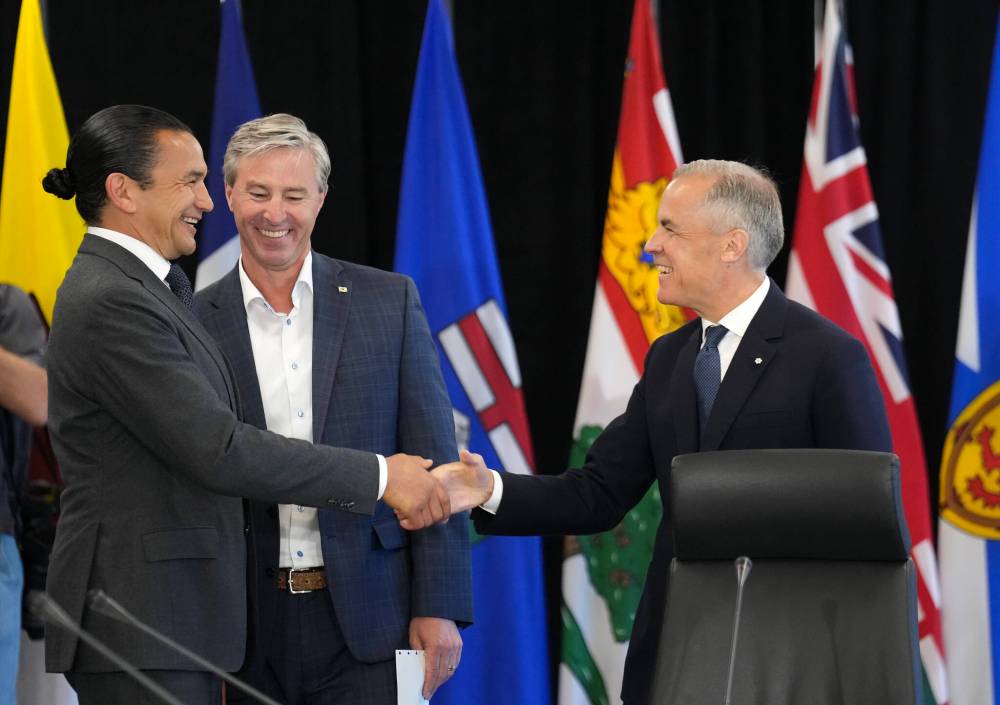Politics
Canadian Premiers Showcase Federalism’s Potential in New Era

Last week, Canada’s premiers effectively took charge of the nation, demonstrating the growing influence of the Council of the Federation (CoF). The gathering marked a significant moment in federalism as the premier-led assembly eclipsed traditional powerhouses like Parliament and the Prime Minister’s Office. This shift highlighted the potential for collaboration among provinces and territories, especially with Prime Minister Mark Carney attending the meeting in Huntsville, Ontario.
A Historical Context of Cooperation
Established over two decades ago in 2003 at Charlottetown, the CoF emerged from a need to strengthen provincial and territorial roles within Canada. The context for its formation involved Quebec’s pivotal participation in federalism under the leadership of Jean Charest, who sought to revitalize the relationship between provinces and the federal government during a time of heightened separatist sentiment from the Parti Québécois.
The founding agreement emphasized that “Canada’s two orders of government are of equal status, neither subordinate to the other.” Yet, the reality often sees the federal government holding primacy, a situation that the CoF aims to address. Premiers recognized that collective action would enhance their bargaining power and influence over federal decisions, particularly following unilateral cuts to health-care transfers that had frustrated them for years.
As Nathan Denette of the Canadian Press noted, the CoF has functioned as a “table of equals,” though the federal government remains dominant in practice. Carney’s attendance at the CoF meeting was a notable shift, as historically, it has been the prime minister who sets the agenda and convenes these discussions.
Lessons from Australia and Future Implications
Canada’s CoF has also inspired similar initiatives abroad, particularly in Australia, which established its Council for the Australian Federation shortly after Canada’s council. Both councils emerged from frustrations with central government control over discussions among states and territories. However, Australia had previously established the Council of Australian Governments (COAG) to address intergovernmental relations, which has since transformed into a national cabinet in response to the COVID-19 pandemic.
This evolution underscores the adaptability of federal structures. As Canada faces significant economic challenges, including trade threats from the United States, the need for a more collaborative and inclusive governing framework becomes increasingly urgent. Carney’s efforts to engage with premiers and Indigenous leaders signal a potential path towards a more unified response to these challenges.
The current political landscape reveals a pressing need for a formal mechanism that includes all orders of government, including Indigenous representation. Without such a structure, tensions may arise as provinces and territories push for infrastructure projects that align with their interests yet conflict with Indigenous governance.
As David McLaughlin, a former clerk of the executive council and cabinet secretary in Manitoba, suggests, Canada must consider whether the CoF can evolve into a truly representative body that encompasses federal, provincial, territorial, and Indigenous voices. The foundational agreement asserts the CoF as an “enduring and evolving institution,” and its future efficacy may depend on how well it can adapt to modern governance challenges.
In conclusion, the recent meeting in Huntsville exemplifies a significant moment for Canadian federalism. As premiers assert their influence, the potential for a more collaborative governance model emerges, capable of addressing the complexities of contemporary Canadian society. The road ahead will require continual dialogue and a commitment to inclusive representation, ensuring that all voices contribute to the nation’s shared future.
-

 Politics4 weeks ago
Politics4 weeks agoSecwepemc First Nation Seeks Aboriginal Title Over Kamloops Area
-

 World5 months ago
World5 months agoScientists Unearth Ancient Antarctic Ice to Unlock Climate Secrets
-

 Entertainment5 months ago
Entertainment5 months agoTrump and McCormick to Announce $70 Billion Energy Investments
-

 Science5 months ago
Science5 months agoFour Astronauts Return to Earth After International Space Station Mission
-

 Lifestyle5 months ago
Lifestyle5 months agoTransLink Launches Food Truck Program to Boost Revenue in Vancouver
-

 Technology3 months ago
Technology3 months agoApple Notes Enhances Functionality with Markdown Support in macOS 26
-

 Lifestyle3 months ago
Lifestyle3 months agoManitoba’s Burger Champion Shines Again Amid Dining Innovations
-

 Top Stories2 months ago
Top Stories2 months agoUrgent Update: Fatal Crash on Highway 99 Claims Life of Pitt Meadows Man
-

 Politics4 months ago
Politics4 months agoUkrainian Tennis Star Elina Svitolina Faces Death Threats Online
-

 Sports5 months ago
Sports5 months agoSearch Underway for Missing Hunter Amid Hokkaido Bear Emergency
-

 Politics5 months ago
Politics5 months agoCarney Engages First Nations Leaders at Development Law Summit
-

 Technology5 months ago
Technology5 months agoFrosthaven Launches Early Access on July 31, 2025




















